If you have limited space to grow your grub, it doesn’t mean you need to restrict your gardening practice. On the contrary, gardening in small spaces offers many benefits, from the joy of growing your produce to the health benefits of connecting with nature. In addition, small-space gardening helps improve mental and physical health and is environmentally sustainable. In this article, I’ll provide you with the right tips and techniques to transform even the smallest outdoor or indoor space into a green oasis that produces an abundance of fresh produce and beautiful plants.
In small-space gardening, you can maximize space using vertical techniques such as hanging baskets, trellises, and stacked containers. Additionally, you can practice the ancient art of companion planting in pots or containers and utilize LED lighting for year-round growing. Likewise, proper soil, water, and nutrient management is also crucial for a successful small-space garden.
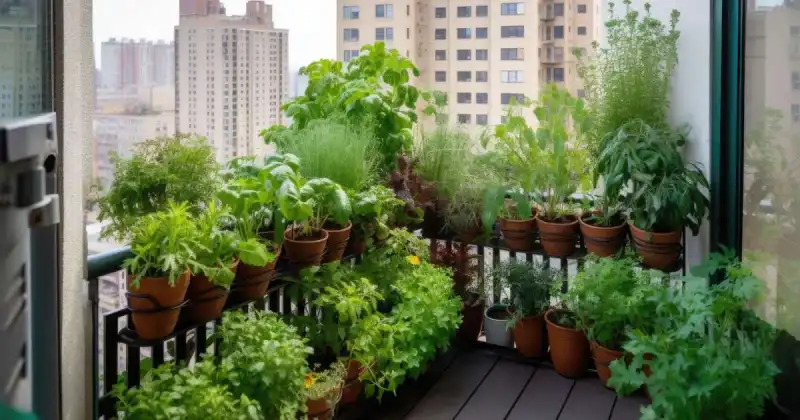
Remember, alternative container gardening methods exist to help you adjust to your new place, even with limited available space. Let’s help you master that small area and its potential to enhance aesthetic appeal, promote sustainability, and yield flavorful and healthy produce, even in the tiniest places.
Humble Highlights
- Save money by learning the 4 primary steps of planning, organizing, and setting up your small-scale operations so you can get your garden up and producing from day one!
- Learn these 6 undervalued and underutilized small-scale gardening practices to maximize your area and grow more fresh vegetables than you ever thought possible.
- Save time by understanding the primary challenges small-scale growers face AND how you can neutralize many of these causes by planning ahead and finding your inspiration with this unique and productive gardening method.
Small-Space Gardening And Its Advantages
There are several essential benefits of small-space gardening, including:
- Connecting with nature
- Improving mental health
- Promoting physical activity and movement
- Sustainable

Small-space gardening is about more than just having fresh produce. This simple practice also offers numerous benefits. One of the primary benefits is that it allows individuals to connect with nature and improve their mental health. In addition, gardening has been shown to reduce stress, anxiety, and depression while improving mood, focus, and concentration. Finally, it is also a great way to get some physical exercise and fresh air, which can benefit both physical and mental health. 1
Check Lowest Prices On Small-Space Gardening Books Now
Another significant benefit of small-space gardening is that it encourages sustainable living. For example, when you grow your produce, you reduce your carbon footprint by reducing the transportation and packaging required for store-bought crops.
When creating your compost in a small area, you’ll likely employ a hot-composting process, where your pile generates heat as the components you add begin to decompose. The best balance for hot composting requires a 3:1 ratio, meaning three parts browns (carbon) to one part greens (nitrogen). It’s vital to keep this ratio balanced so as not to cause unnecessary challenges such as inefficient decomposition or unpleasant odors.
Check Lowest Prices On Compost Tumblers Now
Planning For Small-Space Gardening
As you begin to plan for growing vegetables in a more restrictive spot, it is crucial to consider several vital aspects, including:
- Assessing your available space
- Selecting the right plants for your space
- Adopting container gardening techniques
- Sourcing necessary materials and equipment
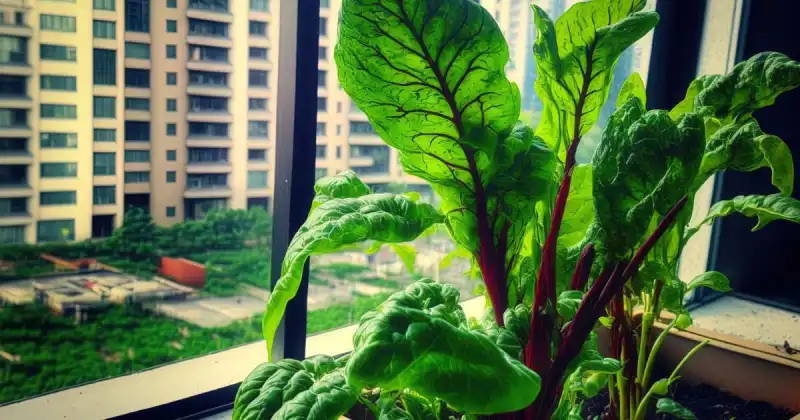
Let’s look at these factors to help you plan your small-space garden effectively.
Assessing The Available Room
To begin, carefully survey your surroundings, looking for spaces with sufficient sunlight and enough room for containers or small raised beds. This process demands attention to detail and patience, as you must consider important factors such as the plants’ size, placement, and how they complement each other to maximize every possible inch and grow successfully. 2
It’s good to sketch your ideas on paper, providing a bird’s eye view of your garden design and making informed decisions about what and where to plant your greenery. No artistic ability is necessary here, and don’t forget to think outside the box and utilize vertical space on walls, railings, and hanging baskets to expand your garden area, too!
Choosing The Right Plants For The Space
The next step is to choose suitable plants. When working with limited space, consider growing plants well-suited for containers and pots, such as herbs, leafy greens, and dwarf varieties of vegetables. In addition, consider cultivating easy-to-grow plant varieties, such as peas, radishes, carrots, cucumbers, kale, and green beans.
Check Lowest Prices On Carrot Seeds Now
Review Container Gardening Alternatives
As mentioned above, container gardening is an excellent option for small-space gardening, as the practice allows any grower, regardless of experience, to optimize their space while having better control over the growing environment.
When selecting containers, you should consider the size, material, and drainage capabilities. Ensure the container has adequate drainage holes to prevent waterlogging, and use a well-draining potting mix to keep your plants happy. 3
Check Lowest Prices On Grow Bags And Vegetable Containers Now
Sourcing Materials And Equipment
Lastly, prepare and supply the necessary materials, tools, and equipment for your small-space garden. You will need containers, potting soil, fertilizer, gardening tools, and other accessories that meet your needs. Also, consider purchasing recycled or upcycled containers to reduce waste while saving money.
Check Lowest Prices On Garden Tool Kits Now
Designing Your Small-Space Garden
Once you have planned your garden, the next step is to design it effectively to maximize the available space. There are several excellent design techniques that you can utilize for your small-space garden, including:
- Vertical gardening techniques
- Wall space
- Maximizing window and balcony space
- Choosing the right plant combinations
- Incorporating trellises and stakes
- Incorporating lighting

Smaller growing areas require a more creative and flexible approach for your operation to be successful. So, consider these two perspectives and their advantages when planning your garden. Let’s look at these methods to see how you may incorporate them into your design.
Vertical Gardening Techniques
Vertical gardening is a technique that involves growing plants upwards instead of outwards. It’s an excellent technique for small spaces, allowing you to maximize your space by increasing your garden’s food output. You can use trellises, hanging baskets, and stacked containers to grow plants vertically.
Utilizing vertical space such as walls, railings, and hanging baskets is an excellent way to expand your garden. For example, aerial root plants such as monstera and orchids can thrive on walls, while petunias, ivy, and sweet potato vines can grow well on railings or be hung in baskets. Growing plants vertically increases your gardening space without using precious floor space while providing a pollinating hub for beneficial insects. 4

Vertical gardening also creates a beautiful green wall or hanging garden, adding a unique visual element to your space. Additionally, it can provide an excellent opportunity to experiment with creative and special planting arrangements, creating an eye-catching focal point for your garden.
Check Lowest Prices On Vertical Garden Towers Now
Utilizing Wall Areas
Walls are often-overlooked and can be utilized for small-space gardening. For example, you can attach hanging baskets or wall-mounted planters to cultivate herbs, succulents, or vegetables such as tomatoes and peppers. And by planting your greens on walls. you’ll have yet another way of designing your place with beautiful and lively plants.
Maximizing Window And Balcony Space
It’s ideal to have a sunny window or balcony for your small-space garden. First, add spice to your view using window boxes or railing planters to grow herbs or small veggies. Then, to take it up a notch, add some hanging baskets to create a lush green wall effect.
Check Lowest Prices On Garden Window Planters Now

While some plants may obscure your outside view, consider the beauty they’ll bring to your indoor environment. It’s an easy way to add a pop of color to your view while growing delicious food. And taking care of your plants is a breeze with the help of watering cans or sprayers.
Starting a small-space garden on your window or balcony will add an attractive element while offering the unique chance to enjoy fresh herbs like basil and thyme or veggies like peas and peppers in your meals.
Check Lowest Prices on Watering Cans Now
Companion Planting: Choosing The Right Plant Combinations
Get more out of your small-space garden by using companion planting techniques. Companion planting involves planting two or more plants nearby that benefit each other in some way. For instance, planting marigolds alongside vegetables can help ward off pesky insects like mosquitoes and squash bugs. Similarly, herbs such as basil, parsley, or thyme grown alongside vegetables can enhance the flavor of your crop.
Check Lowest Prices On Companion Planting Books Now
Companion planting can also maximize space in small containers or raised beds. For instance, planting lettuce and radishes together allows radishes to act as a natural insect repellent for your lettuce while acting as a space saver as radishes can be harvested before lettuce reaches maturity.
Incorporating Trellises And Stakes
To create a climbing surface, gardeners can hang plastic netting, wood lattice, nylon fencing, or woven wire cattle fencing from a trellis frame. However, choosing fencing with holes that don’t exceed four inches across is essential to allow the plants to climb effortlessly and quickly. 5
Check Lowest Prices On Garden Trellis Now
When plants are small, they may need a little help climbing, which can easily be done by gently guiding or loosely tying them to the trellis. To ensure stability, drive the posts at least 18 to 24 inches into the ground using a mallet or post driver.
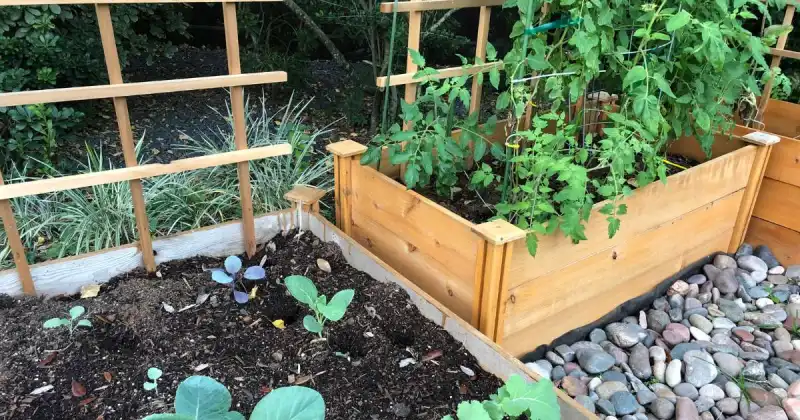
Stakes are essential for supporting growing plants in your small-space garden. They can be made from various materials such as wood, bamboo, PVC, metal conduit, or rebar. You can cut the stakes to the desired length using simple home tools to suit your needs. When choosing wooden stakes, ensuring they’re at least one inch thick is crucial to provide sufficient strength to hold your maturing plants.
Consider investing in one-inch thick, five-foot-long “tobacco” or “tomato” stakes. These come in handy for tomatoes and peppers and don’t take up much room.
Check Lowest Prices On Garden Stakes Now
Incorporating Lighting
If moving your garden inside, artificial lighting is an excellent solution for small-space gardens lacking natural light. LED grow lights are a popular and energy-efficient option that emit very little heat, making them safe to use in small, confined areas. However, choosing the right color temperature for your plants is essential, as different plants have varying light requirements.
For example, blue light promotes vegetative growth, while red light is best for flowering and fruiting. In addition, many LED grow lights come with adjustable color temperature settings to cater to your plants’ growth stages. By supplementing your small-space garden with artificial lighting, you can give yourself an edge by creating an optimal growing environment for your plants, regardless of location.
Check Lowest Prices On LED Grow Lights Now
Preparing For Planting
After planning and designing your limited-space garden, it’s time to take action and start preparing the soil, selecting fertilizers, and choosing your seeds. Remember, how you organize your small garden determines the results you’ll receive.
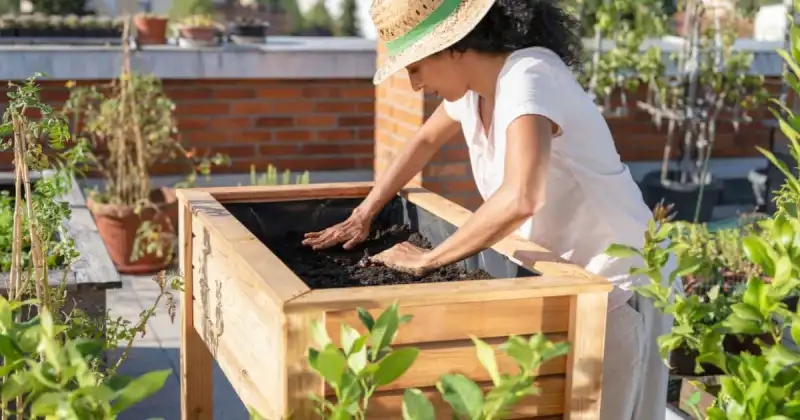
Organic Soil Amendments
Quality soil is necessary for any growing space when developing and caring for healthy plants. This practice includes removing weeds or debris and amending poor soil with quality compost, organic matter, or perlite/vermiculite for improved drainage and structure.
Check Lowest Prices On Perlite Now
If you’re an avid gardener, you likely have some knowledge about the type of soil in your garden, such as sandy, silty, or clay. But if unsure, you can conduct a simple test to determine your soil type. First, grab a clump of soil and slightly wet it in your hand to get a better feel for its texture. 6
Sandy soil is characterized by large rock particles, which make it feel gritty to the touch. Silty soil, on the other hand, has medium particles for a smoother feel. Clay-based soil feels sticky when wet or rubbery when moist and contains fine particles.

Ideally, the perfect soil type for gardening is loam, a mixture of sandy, silty, and clay-based soil. Loam is ideal for plants because it drains well, offers plenty of air and moisture to roots, and is rich in organic matter. You can identify loam by picking up some soil and squeezing it in your hand. It should crumble away without forming a hard ball, yet still feel moist, like a damp sponge.
Likewise, choosing the right soil mix is crucial to growing container plants. Look for a well-draining potting mix with a balanced nutrient composition. Avoid using garden soil, as it can become compacted in containers and lead to poor plant growth and death. Instead, you’ll want to create and continuously amend your top-quality soil mix for the best, high-quality vegetables.
Check Lowest Prices On Potting Soil Now
One option is to take a sample and send it off to a local state lab or university. You should have your results back in a few weeks. However, consider doing an at-home test to avoid the wait. Then, you can immediately receive your results and start amending your soil accordingly.
Remember, whether growing in containers on a balcony or a small plot of land, developing good quality soil takes time, even in small-scale gardening. So, be patient and adjust your dirt with plenty of organic materials and compost to quicken the process.
Check Lowest Prices On Soil Test Kits Now
Fertilization Techniques
While fertilizers can accelerate plant growth, it is still best to choose organic options, at least in my opinion. This is because organic fertilizers are generally considered safer for your home, children, and pets.
Consider using organic fertilizers such as compost, fish emulsion, or worm castings to provide essential nutrients to your plants. Avoid using chemical fertilizers, which may damage the soil and harm beneficial organisms.
Check Lowest Prices On Worm Castings Now
Likewise, research has shown that overuse of synthetic fertilizers, and pesticides for that matter, may create tolerance and resistance over time. While long-term fertilizer use reduces soil fertility, making crops harder to grow, excess pesticide use makes more tolerant and adaptable insects that seek to harm your garden. 7
As the video below demonstrates, vertical gardening saves space, conserves water and electricity, offers flexible plant arrangements, and protects against wildlife while contributing fresh, quality produce throughout the year. Ensure you keep your plants watered when growing vertically and that your budding crops receive plenty of direct sunlight.
Seed Selection
Choose seeds well-suited for your specific growing conditions and climate and grow well in containers. Consider different elements such as the amount of sunlight, type of soil, and temperature when selecting seeds to ensure they germinate quickly and flourish within your growing environment.
When selecting seeds for container gardening, consider planting beans, beets, chili peppers, spinach, and radishes, as these plants grow best in confined spaces. In addition, these plants are easy to grow and maintain, creating an optimal growing space primed for some early wins.
Common Issues In Small-Space Gardening
There are some common challenges growers face in small-space gardening, including:
- Pests
- Diseases
- Poor Soil Quality
- Space Constraints
- Unpredictable Weather Changes
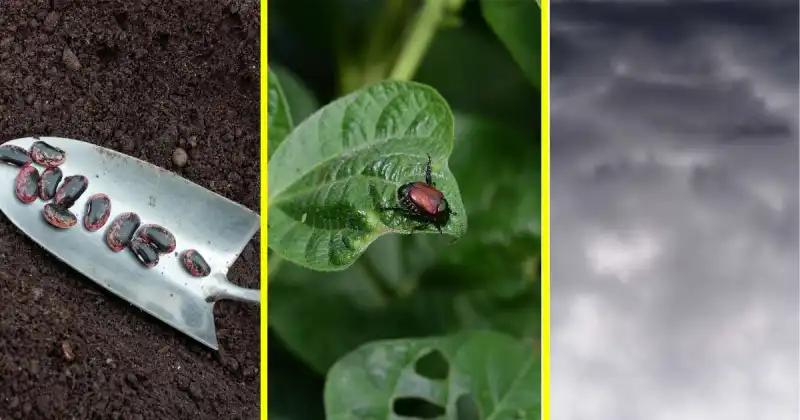
Let’s examine these issues so you know how to best deal with them and prevent them from destroying your green oasis!
Pest Patrol: Battling Garden Pests
As they are in large-scale agriculture, pests are also common in small-space gardening. Fortunately, you can control pests by implementing natural pest control methods, such as companion planting or using organic insecticides that don’t leave a long (in any) residual on the plant and leaves.
Companion planting is one of the most innovative and natural ways to ward off unwelcome visitors and involves planting different species of plants nearby that help repel pests. Marigolds, for example, help deter nematodes and beetles. You can also use organic insecticides, such as Neem oil, a natural and safe organic insecticide that can help eliminate various garden pests. Neem oil can be used on indoor and outdoor plants as a natural solution. 8
Check Lowest Prices For Neem Oil Now
Disease-Free Zone: Practices For Prevention of Diseases In Your Small-Space Garden
Disease prevention is vital to ensure the health of your plants throughout their lifecycle. You can help lessen the chances of fungal diseases and mold proliferation erupting in your garden by practicing good sanitation, such as regularly removing dead plant material and cleaning your gardening tools, such as pruners, shears, and trowels. Alternatively, you can grow disease-resistant plant varieties and develop crops in well-draining and oxygenated soil, like loam soil mentioned above, to prevent soil-borne diseases.
Managing Natural Soil Enhancers
Managing soil and nutrients is important for healthy plant growth. You can manage soil and nutrients by regularly testing your soil’s pH level and amending it with organic matter, such as mature compost (humus) or aged manure.
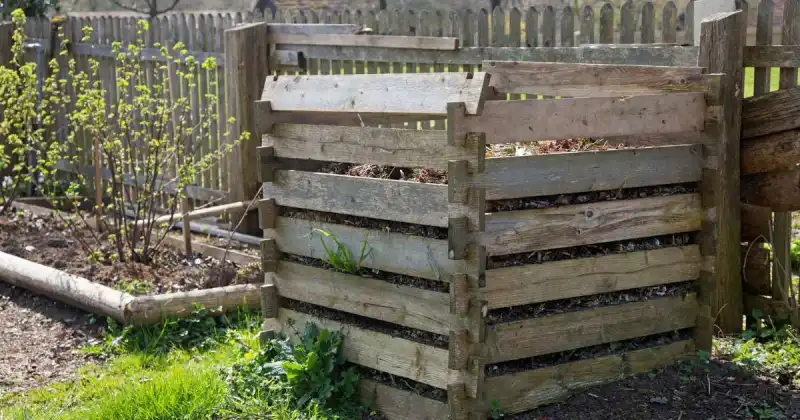
One excellent way to manage soil is by regularly testing the pH level, which indicates the acidity or alkalinity of your garden soil. As previously mentioned, this process can be done using a home testing kit or sending a sample to a laboratory for analysis.
Check Lowest Prices On pH And Soil Moisture Testers Now
Organic fertilizers are also an excellent option for giving your plants essential nutrients. These fertilizers are acquired from natural sources such as blood meal, bone meal, and fish emulsion and improve soil structure and increase the soil’s ability to hold moisture. When applying, read the directions so you don’t overfertilize your foliage.
Check Lowest Prices On Fish Emulsion Now
Managing Space Constraints
Space constraints are a common issue in small-space gardening. And why wouldn’t they be? It’s called small-scale gardening for a reason. First, however, consider using vertical gardening techniques, such as trellises or hanging baskets, to manage space constraints and maximize every available inch of your area. Second, you can choose compact plant varieties or use container gardening to optimize your space. 9
Check Lowest Prices On Vegetable Hanging Baskets Now
Dealing With Weather Fluctuations
Weather fluctuations, such as extreme heat or cold, can affect the health of your plants. To effectively deal with weather fluctuations, consider using season extenders, such as row covers or cold frames, to protect your plants. You can also choose plant varieties well-suited for your local climate and weather conditions.

Check Lowest Prices On Row Covers Now
Although you’ll undoubtedly have more control over your indoor growing environment, you will still need to take special care to maintain your plants. For example, LEDs can achieve the necessary lighting, and natural airflow can be accomplished with an oscillating fan. In addition, a dehumidifier may be needed to help with overall temperature and humidity control.
Check Lowest Prices On Dehumidifiers Now
Popular Plants For Small-Space Gardens
Because you’re working with a smaller space, fertile soil, good sun exposure, and appropriate watering become all that more important in your garden. Choosing suitable vegetable varieties, such as compact tomatoes and squash, are ideal because even if you have a small plot of land or balcony, you can grow a remarkable amount of fresh, nutritious food.
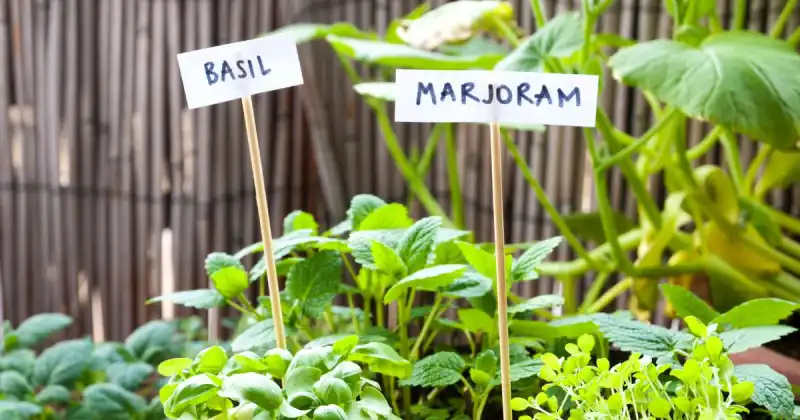
Below are several elements you should include when planning and developing your small-space area.
Focus On Foliage (Group Of Leaves)
Foliage is vital in small-space gardening as it can create texture and depth within a limited area. Therefore, consider cultivating plants with different leaf shapes, colors, and sizes to create visual interest while doing the same with your budding vegetables’ sizes, textures, and forms.
Grow Vegetables Over Your Pergola
Pergolas are great for small-space gardening as they allow you to grow vegetables vertically, maximizing the use of the available room. Some vegetables great for growing over pergolas are climbing beans, cucumbers, and squash. These vegetables can be trained to grow up and over the arbor, creating a living canopy and providing shade.
Check Lowest Prices On Pole Bean Seeds
Plant Edibles As Ornamentals
Incorporating edible plants into your ornamental garden is functional while adding visual interest to your green area. Many vegetables have beautiful foliage or produce colorful fruits and can be grown in containers or raised beds if the room is convenient.
Some edible plants suitable for ornamental gardens are tomatoes, peppers, and strawberries. These plants can be grown in containers or integrated into garden beds alongside flowers and other ornamental varieties.
Check Lowest Prices On Strawberry Seeds Now
Benefits Of Small-Space Gardening
Small-space gardening has many health, economic, and environmental benefits. One of the primary health benefits of small-space gardening is that it provides access to fresh, organic produce that may be difficult to find in grocery stores. One environmental benefit of this growing practice is that it lowers your carbon footprint. You can grow your produce at home without relying on transport, shipping, and fuel usage as part of standard supply chains.
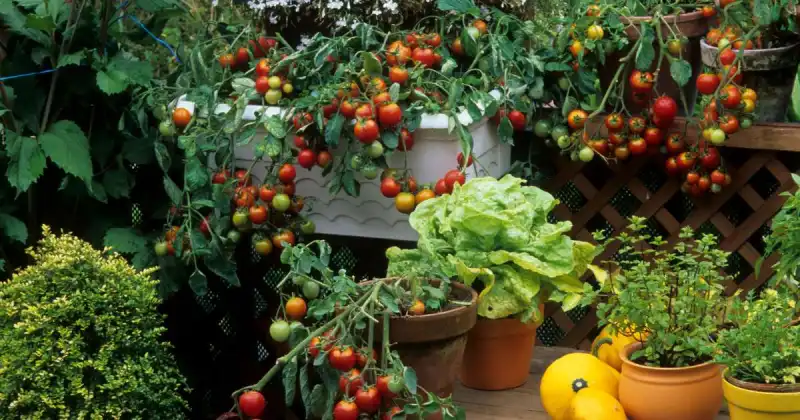
Growing your fruits and vegetables can also be a great way to introduce more variety into your diet while encouraging a healthier lifestyle. Additionally, gardening offers an excellent way to get outside, whether on a small plot of land or an urban balcony and enjoy some physical activity, improving overall health and well-being.
Small-space gardening can help save money on groceries by providing a source of fresh produce at home. Further, this growing type can be a rewarding hobby enjoyed by friends and family, creating a sense of community and social engagement. 10
As previously mentioned, small-space gardening can also have positive environmental benefits. For example, growing your produce reduces the carbon footprint associated with food transportation and helps to promote sustainable living practices. Overall, small-space gardening has numerous benefits, making it an excellent option for individuals looking to improve their health and save money while reducing their environmental impact.
Inspiration For Small-Space Gardens
Small-space gardening has become increasingly popular as more people have embraced growing fresh produce on small plots of land and even on urban rooftops. For those new to small-space gardening, examples of this successful and sustainable practice can be a great source of inspiration.
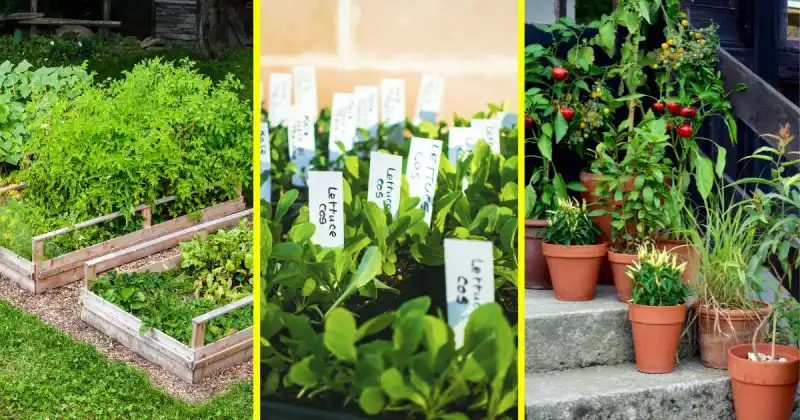
These so-called “limited” gardens aren’t limited at all. They often incorporate creative vertical, container, and companion planting techniques. And they demonstrate how even the smallest of spaces can be transformed into lush, productive gardens that provide plenty of delicious food while being visually appealing. 11
Conclusion
Small-space gardening is an excellent way to enjoy gardening, even in a confined area. You can create a thriving garden by carefully assessing the available room, choosing the right plants, planting in containers, and sourcing the necessary materials and tools to help you get the job done. In fact, some of the most impressive and consistently producing gardens spawn from a grower who begins with limited space.
You can maximize your yield using companion planting, trellises, and stakes. In addition, small-space gardening offers numerous advantages, including physical and mental health, economical, and environmentally sustainable benefits.
But just like in any growing space you’re preparing, it’s essential to consider several key factors that will help you get started right, including assessing your area, selecting the right plants and growing methods, determining your lighting, and sourcing the appropriate tools and equipment you’ll depend on to keep your plants healthy.
Gardening is a very forgiving and flexible pastime. And in my opinion, this practice truly shines in limited spaces. Not only does it draw out the creativity in the grower in unexpected and surprisingly unique ways, but by utilizing a few simple guidelines, any humble gardener can grow an exceptional amount of food that will bring joy and satisfaction for years to come!
Do you successfully manage a small-scale garden? What lessons have you learned that can help your fellow growers start their journey? Drop us a line in the comments below and spill!
SOURCES
- Wikipedia – Gardening In Restricted Spaces
- National Library Of Medicine, National Center For Biotechnology Information – Small-Scale Urban Agriculture: Drivers Of Growing Produce At Home And In Community Gardens In Detroit
- Wikipedia – Horticulture
- Clemson University, Cooperative Extension Home & Garden Information Center – Small-Scale Gardening
- University Of Georgia, Extension – Growing Indoor Plants With Success
- Victoria Agriculture, Victorian Resources Online – Soil Texture
- United States Envrionmental Protection Agency – Sources And Solutions: Agriculture
- MDPI – Urban Gardening In A Changing Climate: A Review Of Effects, Responses And Adaptation Capacities For Cities
- MDPI – Indoor Vegetable Production: An Alternative Approach To Increasing Cultivation
- National Library Of Medicine, National Center For Biotechnology Information – Gardening Is Beneficial For Health: A Meta-Analysis
- Cambridge University – Farming In And On Urban Buildings: Present Practice And Specific Novelties Of Zero-Acreage Farming (ZFarming)

